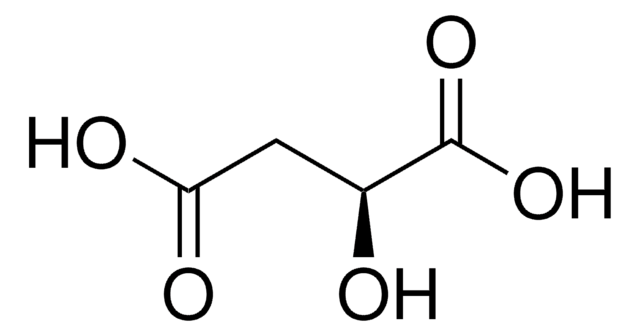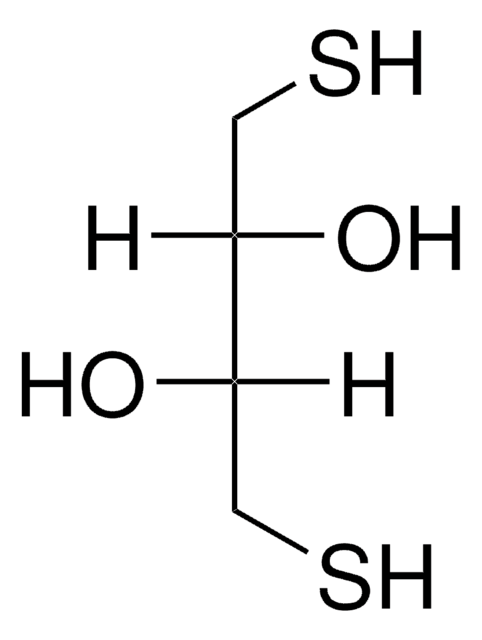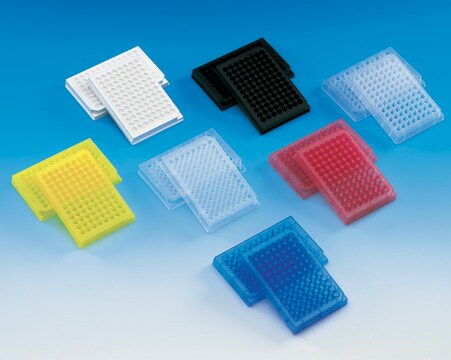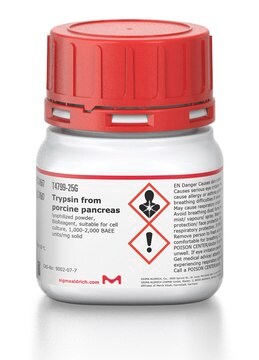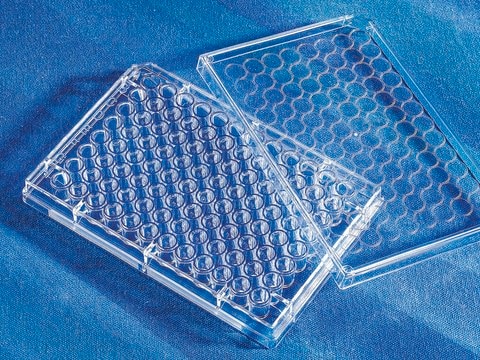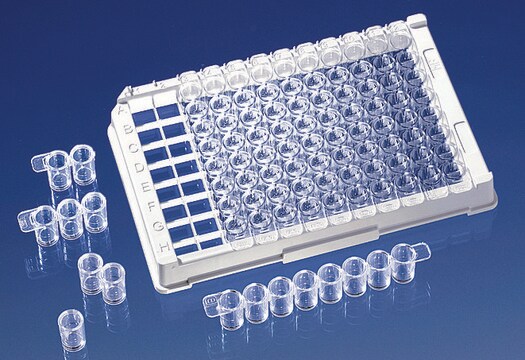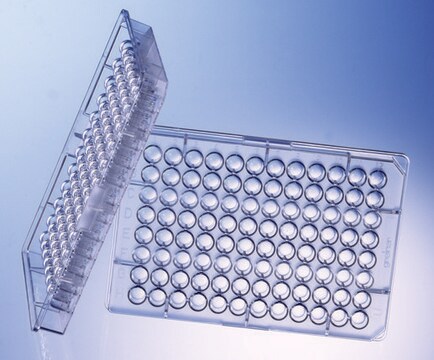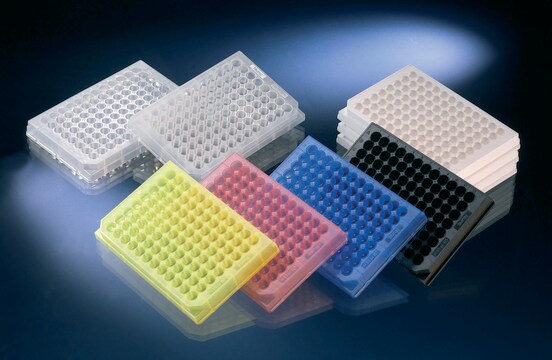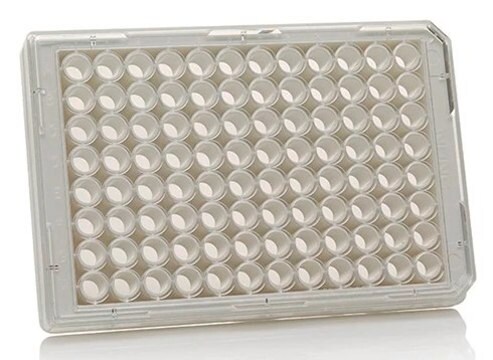M9410
Piastre Nunc-Immuno™ con 96 pozzetti MicroWell™ per solidi
96 well MicroWell™ MaxiSorp™ flat bottom plate, pinchbar design
Sinonimo/i:
96 multiwell plates, 96 well microplates, 96 well microtiter plates, 96 well plates, ELISA plates, cell culture plates, immunoassay plates, tissue culture plates
About This Item
Prodotti consigliati
Materiali
flat bottom clear polystyrene wells
polystyrene
Sterilità
non-sterile
Caratteristiche
lid: no
lid: no
skirt
Confezionamento
case of 60 ea
Produttore/marchio commerciale
Nunc 442404
Lungh. × largh. lastra
128 mm × 86 mm
Misura
96 wells
Area superficiale
2.7 cm2
Capacità totale
400 μL
Volume massimo del pozzetto
400 μm
Volume d’esercizio
350 μL
Compatibilità
suitable for (quantitative/qualitative solid phase immuno assays (e.g. ELISA) and binding assays)
Tipo di binding
(MaxiSorp surface)
high binding surface
Cerchi prodotti simili? Visita Guida al confronto tra prodotti
Descrizione generale
- Bordi a sbalzo dei pozzetti.
- Riproducibilità certificata del potere legante
- Sistema di individuazione alfanumerico
- Adatto per apparecchi standard
- Codici a barre disponibili a richiesta
Trattamenti superficiali:
- Trattamento superficiale PolySorp® con alta affinità per molecole di natura idrofobica.
- Trattamento superficiale MediSorp™ chimicamente a mezzo fra PolySorp e MaxiSorp, favorisce un basso rumore di fondo con campioni contenenti siero.
- Trattamento superficiale MaxiSorp™ con alta affinità per molecole con parti miste idrofile/idrofobe.
- MultiSorp™ surface treament, high affinity to hydrophilic molecules
Applicazioni
Note legali
Scegli una delle versioni più recenti:
Certificati d'analisi (COA)
It looks like we've run into a problem, but you can still download Certificates of Analysis from our Documenti section.
Se ti serve aiuto, non esitare a contattarci Servizio Clienti
Possiedi già questo prodotto?
I documenti relativi ai prodotti acquistati recentemente sono disponibili nell’Archivio dei documenti.
I clienti hanno visto anche
Il team dei nostri ricercatori vanta grande esperienza in tutte le aree della ricerca quali Life Science, scienza dei materiali, sintesi chimica, cromatografia, discipline analitiche, ecc..
Contatta l'Assistenza Tecnica.

